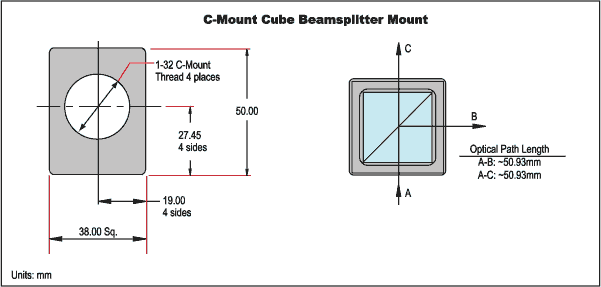
 TECHSPEC® components are designed, specified, or manufactured by Edmund Optics. Learn More
TECHSPEC® components are designed, specified, or manufactured by Edmund Optics. Learn More
TECHSPEC® C-Mounted Cube Beamsplitters offer easy integration into systems, allowing the use of standard off-the-shelf components. The housing is 50mm H x 38mm W x 38mm D, with four C-Mount (1" x 32 TPI) female threaded apertures. A threaded aperture lid is included to close the unused port. The base has a centered ¼-20 tapped hole for mounting to a post. The TECHSPEC® C-Mounted Standard Cube Beamsplitter features a coating for visible wavelengths and MgF2 anti-reflection coated faces.
The C-Mounted Visible Non-Polarizing Cube Beamsplitter is designed for the 430 - 670nm wavelength range, and the C-Mounted NIR Non-Polarizing Cube Beamsplitter is designed for the 720 - 1080nm wavelength range.

1-800-363-1992
or view regional numbers
QUOTE TOOL
enter stock numbers to begin
Copyright 2025 | Edmund Optics, Ltd Unit 1, Opus Avenue, Nether Poppleton, York, YO26 6BL, UK
California Consumer Privacy Acts (CCPA): Do Not Sell or Share My Personal Information
California Transparency in Supply Chains Act